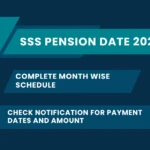Canada is recognized as a rapidly advancing country in technology and biotechnology. The recently introduced Innovation Stream Pilot work permit allows select high-growth IT companies to recruit foreign workers without the need for a Labour Market Impact Assessment (LMIA). This initiative aims to swiftly tackle the skills shortage in Canada’s burgeoning technology industry.
Conditions for Obtaining an LMIA-Exempt Work Permit
To qualify for this work permit, candidates must have a job offer from one of the eight businesses participating in the Global Hyper Growth Project, which features prominent companies like Ada Support, Clio, and Lightspeed. These organizations operate across various domains, including legal technology and artificial intelligence (AI).
Positions must be classified under the National Occupational Classification (NOC) TEER categories 0, 1, 2, or 3. This classification includes roles for engineers, technicians, data scientists, executives, managers, and technical specialists.
Additionally, the offered salary must be competitive and align with the regional median wage for the position. Employers must also adhere to any applicable freelance consortium agreements that mandate fair compensation for international applicants.
Candidates must fulfill the qualifications specified in the NOC job requirements, which may entail a certain level of experience and specific educational credentials.
New LMIA-Exempt Work Permit Objectives
The burgeoning Canadian tech sector is facing challenges in recruiting individuals with technical expertise, especially in areas such as biotechnology, software development, and artificial intelligence (AI). The Global Hyper Growth Project, which encompasses this new LMIA-exempt work permit, was initiated to tackle this problem.
The primary aim of this project is to attract skilled foreign workers to bolster Canada’s leading IT companies, ensuring the country remains at the forefront of the technology landscape.
Procedure to Apply for an LMIA-Exempt Work Permit
Step 1: Once a job offer has been secured, the application process is relatively straightforward.
Step 2: The employer must submit the employment offer along with a CAD 230 Employer Compliance Fee through the IRCC Secure Account at the time of application.
Step 3: Applications for TEER 0 or 1 positions submitted remotely from Canada may be processed within two weeks.
Step 4: However, due to recent changes, the review of applications for TEER 2 and 3 positions may take a bit longer.
Actions for Successful Application
Step 1: Prospective applicants should first seek job openings at companies participating in the Global Hyper Growth Project, such as Ada Support, AlayaCare, or Vive Crop Protection. These technology-focused organizations are well-positioned to hire talent from around the globe.
Step 2: Once candidates receive confirmation and a valid job offer in a TEER category, they should prepare the necessary documentation, including educational certificates and proof of work experience.
Step 3: After the employer submits the required documentation, the candidate can apply for a work visa by accessing the Secure Account section of the IRCC’s official website.




